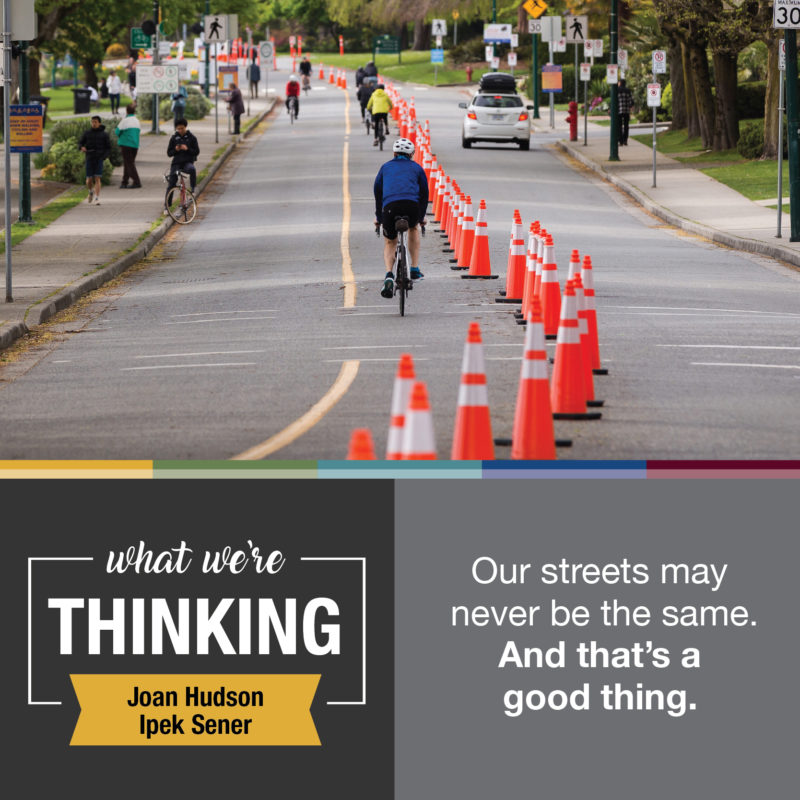Not long after the coronavirus pandemic compelled widespread stay-at-home directives, many cities from coast to coast took steps to restrict motor vehicle traffic on selected streets. With sidewalks too narrow to allow for six-foot personal buffer zones, those moves opened thoroughfares for walking and biking, and aimed to give people space to relieve cabin fever symptoms while enabling physically-distanced physical activity.
As leaders grappled for solutions that were typically beset with complexity, billion-dollar price tags and long ramp-up times, the idea of shutting down streets was simple, cheap and quick. Producing a vaccine would take months. Closing streets could be done overnight.
Several cities have done just that, enacting programs like Austin’s Healthy Streets initiative, which closes some local streets to through traffic, allowing access only for residents and visitors, emergency transport, and deliveries.
So far, so good.
But will it last? We have yet to see whether this is a one-shot trial that goes away as suddenly as it emerged, or a robust, high-yield experiment that far outlives the pandemic. So, now is a good time to ask three important questions.
Is it working? We need to know the impact not only for selected streets, but also for the roadways nearby. For instance, does through traffic prohibited in one space simply spill onto an adjacent one, creating an unintended whack-a-mole effect? Are the safety benefits realized on one street canceled out by more frequent crashes or pedestrian incidents on nearby roads? Does coaxing people to get outside inadvertently encourage a block party effect that’s inconsistent with personal distancing?
Is it inclusive? Are street closings being used proportionally in areas where COVID-positive cases are over-represented, in neighborhoods occupied largely by people of color, and in low-income areas? Are closings benefiting all population groups? Uneven application of the strategy can quickly create a system of haves and have-nots that violates basic principles of social and environmental justice.
Is it sustainable? When people return to regular routines, will they stick to what they learned in the closed streets experiment by walking and biking more, or will they reflexively rush back to their familiar single-occupant-vehicle travel habits? Will the partnership between cities and block captains/community volunteers continue, with people living near the closures taking an active role in the program (i.e. making sure signs are in place)?
When cities began to shut down streets, time was of the essence. Governments were pressured to do something – anything – and do it fast. Was this a good thing to do? We believe that it was, and we believe that making adjustments along the way will help to create equitable, accessible, sustainable, and resilient communities.
When this crisis is behind us, we should hope that people will remember how the great outdoors brought them sanity and joy during a frightening time.
We should hope that more people come to appreciate how a reduction in driving promises great benefits for our environment as well as our mental and physical health.
We should hope that cities realize that having abundant safe space to walk or bike is as important as reserving space for our cars – that we can eliminate lanes for single-occupant vehicles, create more attractive and safe space for non-car modes, and realize a well-connected, multi-modal transportation system.
We should hope for something that exceeds what we had before. Amid the understandable craving for a return to normal, we ought to share a far loftier aspiration – one that says we can do much better than normal.
Joan Hudson is a Research Engineer at the Texas A&M Transportation Institute (TTI). Ipek Sener is an Associate Research Scientist at TTI.
This article was originally published in Austin American Statesman, August 9, 2020.
